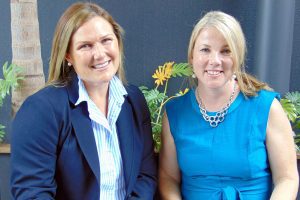About one in five Australians between the ages of 50 and 59 have hearing loss. And this increases to affect 2 out of every 3 people over 60. Hearing loss can occur related mostly to ageing effects; be caused by overexposure to loud noise and sometimes other medical issues writes Professor Elaine Saunders
Health scientists know that other issues might arise if we don’t take the necessary actions to treat hearing loss. Untreated hearing difficulties commonly leads to a decline in mental health and cognition, relationship issues, and reduced employment opportunities. And all this can happen even if your loss is mild and you think you can “get by” with it.
The sooner you treat hearing loss, the better
Despite the evidence advocating early treatment for hearing loss, amazingly, of the 4 million people in Australia who would have better quality of life with hearing aids, most adults with mild hearing loss don’t do anything about it. That’s partly because there isn’t enough publicity surrounding the importance of early action, but it’s also partly because hearing difficulties can sneak up on us gradually. If we pay attention to our changing hearing as we get older, the signs are all there and shouldn’t go ignored.
Here are the top 5 signs that you might have hearing loss:
- You find it hard to hear a conversation in a crowded room or restaurant. The ear and the brain work together to understand conversation in difficult places. If hearing is not as good as it once was, this is often the first place it shows up.
- You feel that people are always mumbling. If this is happening more frequently than not, it’s not because young people have suddenly started to mumble; imperfect hearing makes speech sound muffled.
- Loved ones complain about the volume you set the TV or radio. This tell-tale sign means that other people will be starting to notice that your hearing is deteriorating. Pay attention if people start telling you that you’re mishearing things, even if they say so with a joking tone.
- You find it easier to understand men’s voices than women’s. That means your hearing is likely deteriorating in the upper registers. Speech is generated by the vibration of the vocal cords. The frequency at which they vibrate is known as the ‘fundamental frequency’. Men tend to speak with a fundamental voice frequency near Middle C, or 256 Hertz, and women speak with a fundamental frequency that’s around an octave higher.
- You often get noises or ringing in your ears. Tinnitus is usually a sign of hearing damage, often caused by too much exposure to loud sound.Tinnitus is usually a sign of hearing damage, often caused by too much exposure to loud sound.
If you can relate all too well to any of the above signs, I’d encourage you to have your hearing investigated.
So, what should you do if you think you have hearing loss?
The first thing you should do is pay a visit to your GP who will look in your ears to double check that your problem isn’t caused by a build-up of ear wax. If ear wax isn’t the problem, head to an audiologist for a full hearing assessment. At your assessment, your audiologist should ask you questions and run the necessary tests to find out how well you can hear speech sounds, and how well you hear in noise. There are some good online tests. Pick one that uses words. On-line tests won’t tell you why you have hearing loss though.
Effective treatments are available for hearing loss!
If you have a hearing loss, your audiologist should explain the treatment options available to you. Hearing aids are the most common way to treat hearing loss, but sometimes medication or surgery is needed.
So, the main message you can takeaway is that if you’re showing any of the top 5 signs of hearing loss, or even if you simply feel that you’re not hearing as well as you should be, then don’t delay. Check your hearing right away.
About
Dr Elaine Saunders – Social Entrepreneur
B.Sc., M.Sc. (Clinical Audiology), PhD, GAICD, Grad Dip Mgt. (Technology)
Elaine is a passionate advocate on the issue of hearing loss. A Biomedical Engineer, Elaine has co-founded and led two award-winning companies which have changed the hearing industry: Blamey Saunders hears, a hearing aid and telehealth company; and Dynamic Hearing Pty Ltd (now part of Cirrus Logic), supplier of award winning digital signal processing for ultra-low power chips for the hearing aid and Bluetooth headset industry.
In 2015 the Blamey Saunders IHearYou® self-fit hearing aid system received the Australian Good Design Award for Social Innovation. Elaine’s recent personal awards include the BioMelbourne Network’s Women in Leadership Award (2015), AFR/Westpac’s 100 Women of Influence (2015) and the ATSE Clunies Ross Medal for Entrepreneur of the Year (2016).
Elaine is Adjunct Professor, Faculty of Science, Engineering and Technology, Swinburne University, and Chair of its Innovation Precinct Advisory Board. She is a Non-Executive Director of the Australian National Fabrication Facility (ANFF) and a former Non-Executive Director of Alfred Health. She also led the Cooperative Research Centre team that developed a new electrode for Cochlear Ltd, leading to the company gaining the Australian Design Award in 2000.





















Add Comment